Rebuilding in Syria
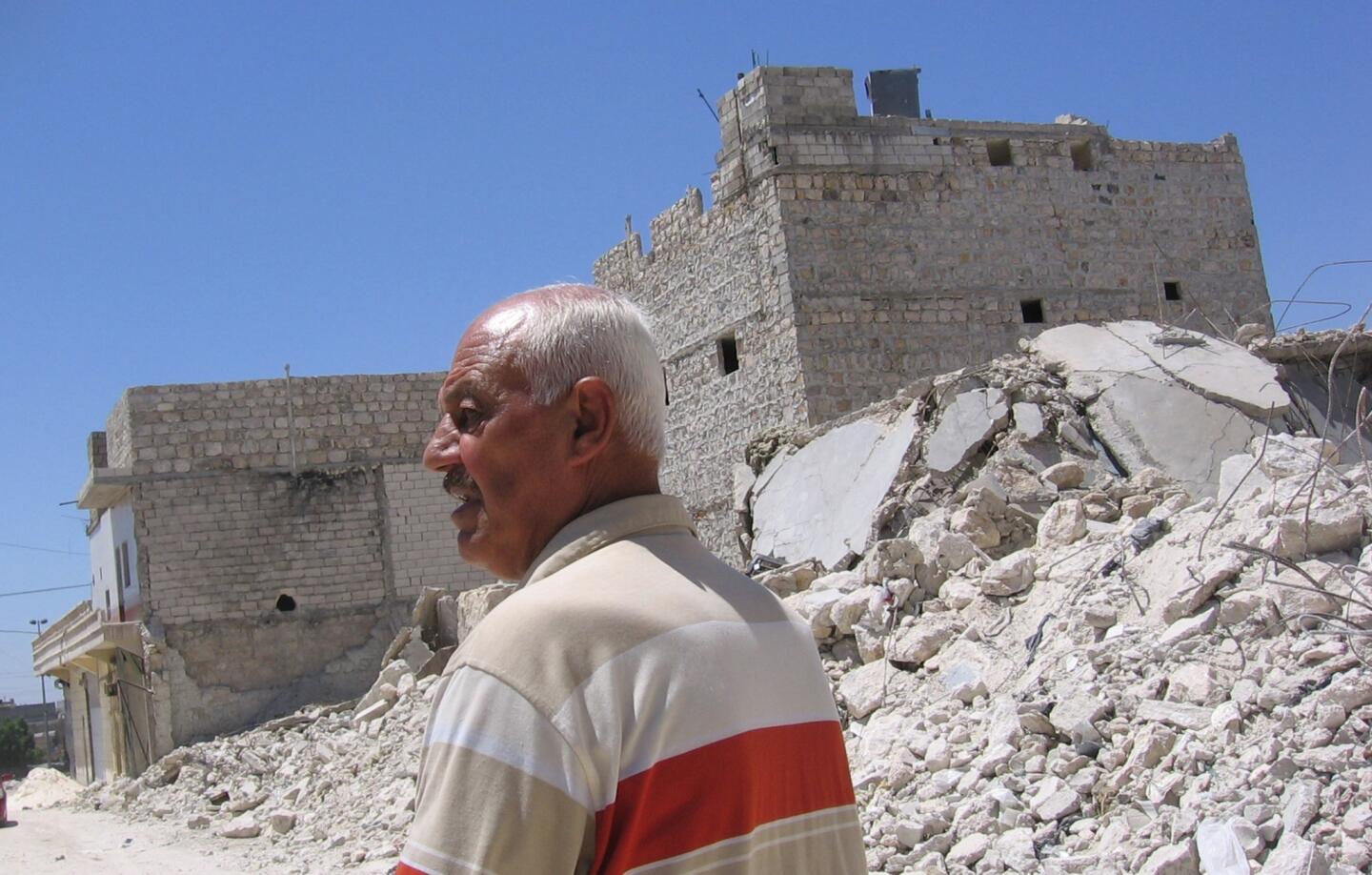
A Scud missile struck near Abdulaziz Haizaan’s home in Aleppo, crumbling much of the top floor, blowing out doors and shattering glass. But a week later, the retired factory worker borrowed about $1,150 and began to rebuild. (Raja Abdulrahim / Los Angeles Times )
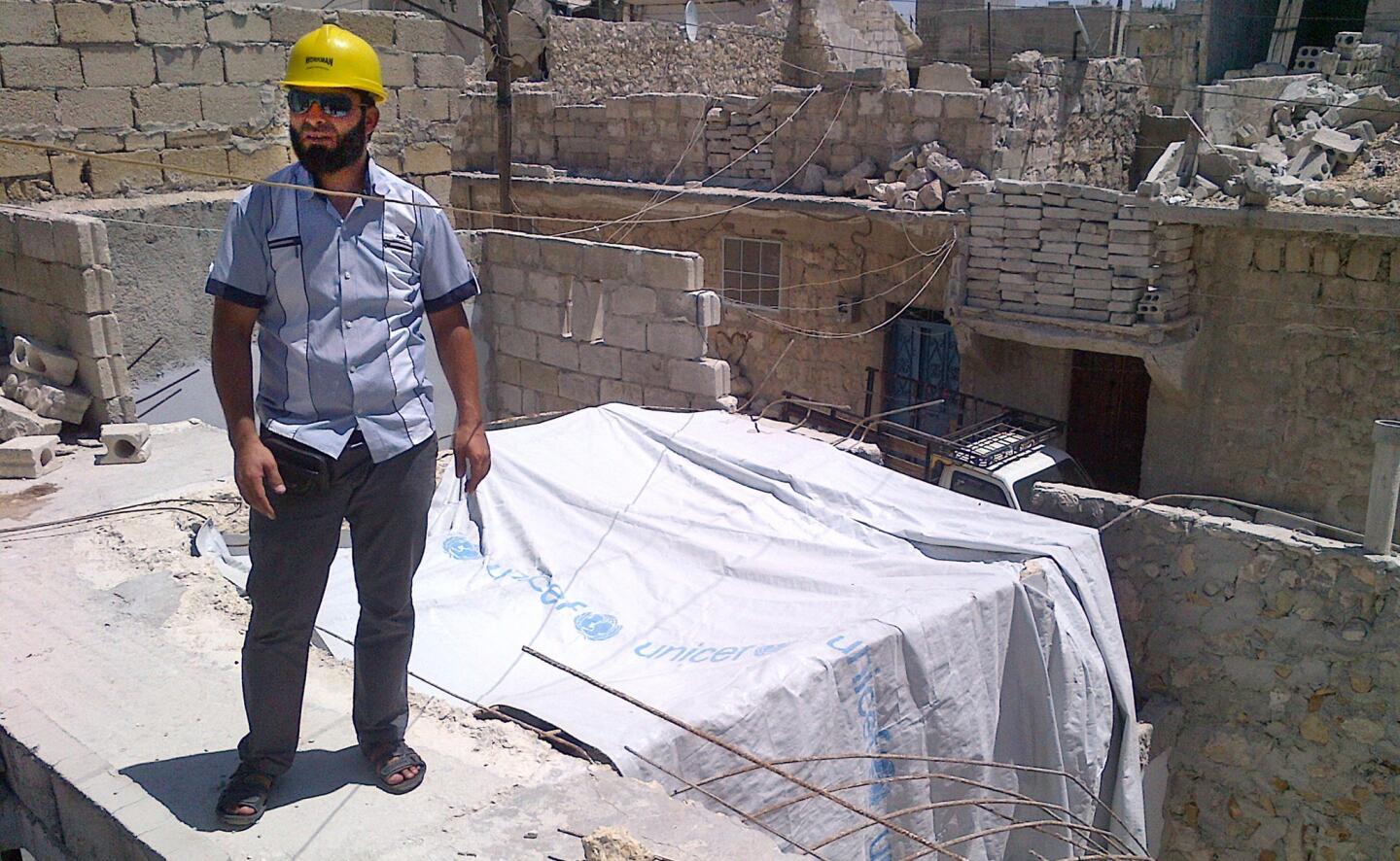
“The person who is rebuilding his house knows that it can be hit the next day with a shell and destroyed again,” says Abu Ahmad Yassin, an electrician who heads the Islamic Administration for General Services in Aleppo, Syria. “They are rebuilding with faith in God and hope in the revolution that soon it could be over.” (Raja Abdulrahim / Los Angeles Times)
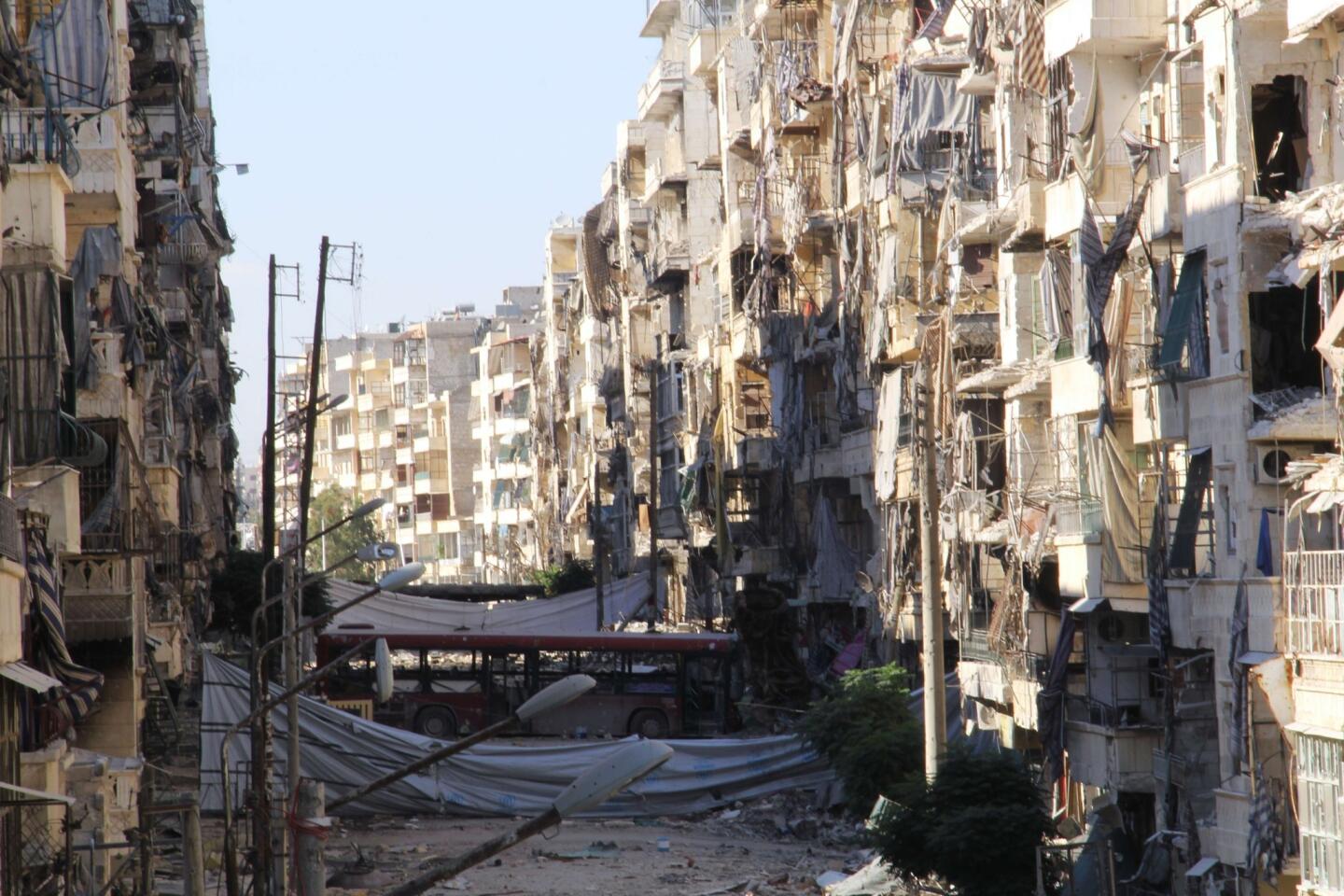
Heavily damaged buildings remain standing in an Aleppo neighborhood. (Abo Mhio / AFP/Getty Images)
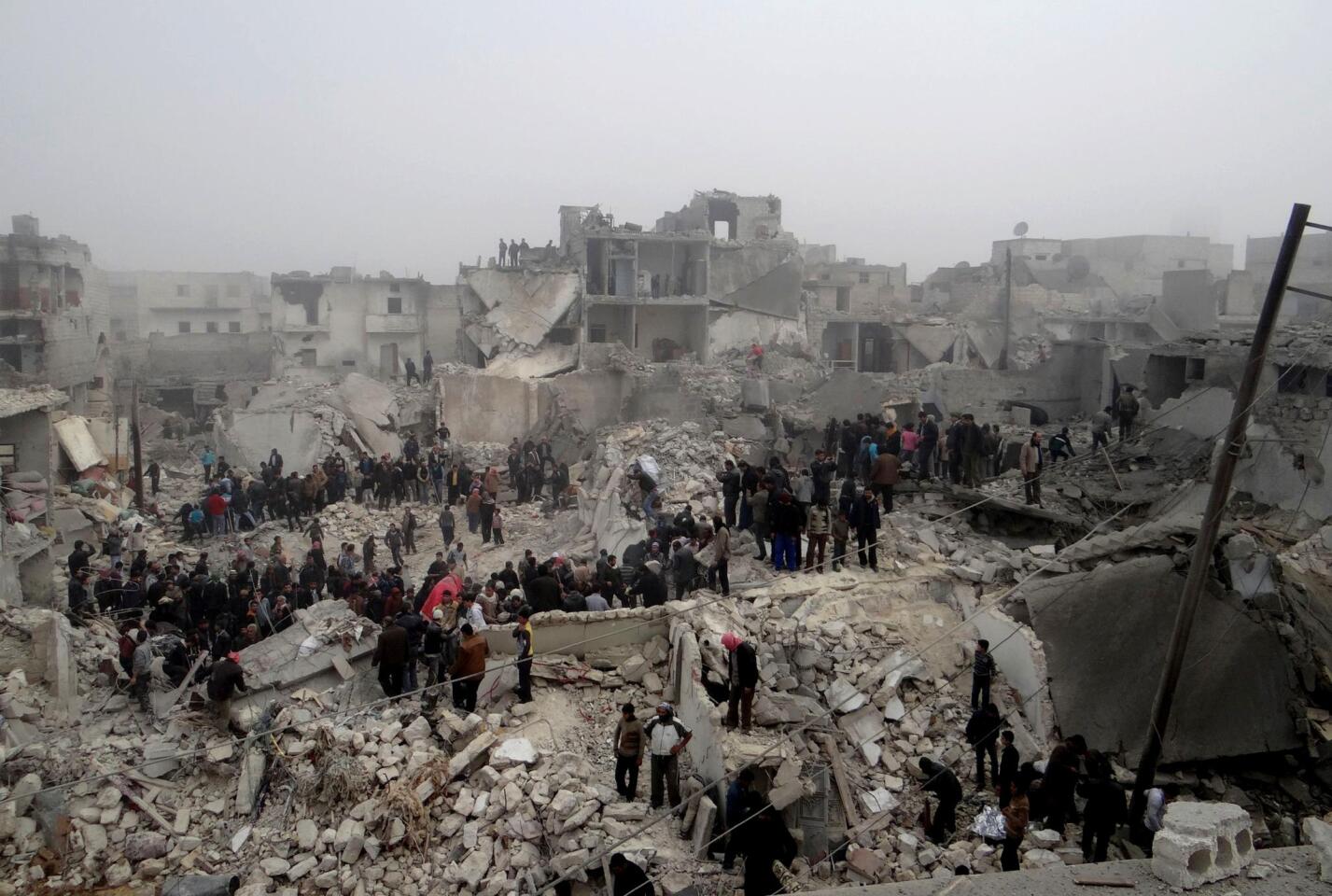
Syrians inspect their neighborhood after an apparent missile strike in February on the northern city of Aleppo, once Syria’s financial hub, in a photo released by the opposition’s Aleppo Media Center. (AFP / Getty Images)
Advertisement
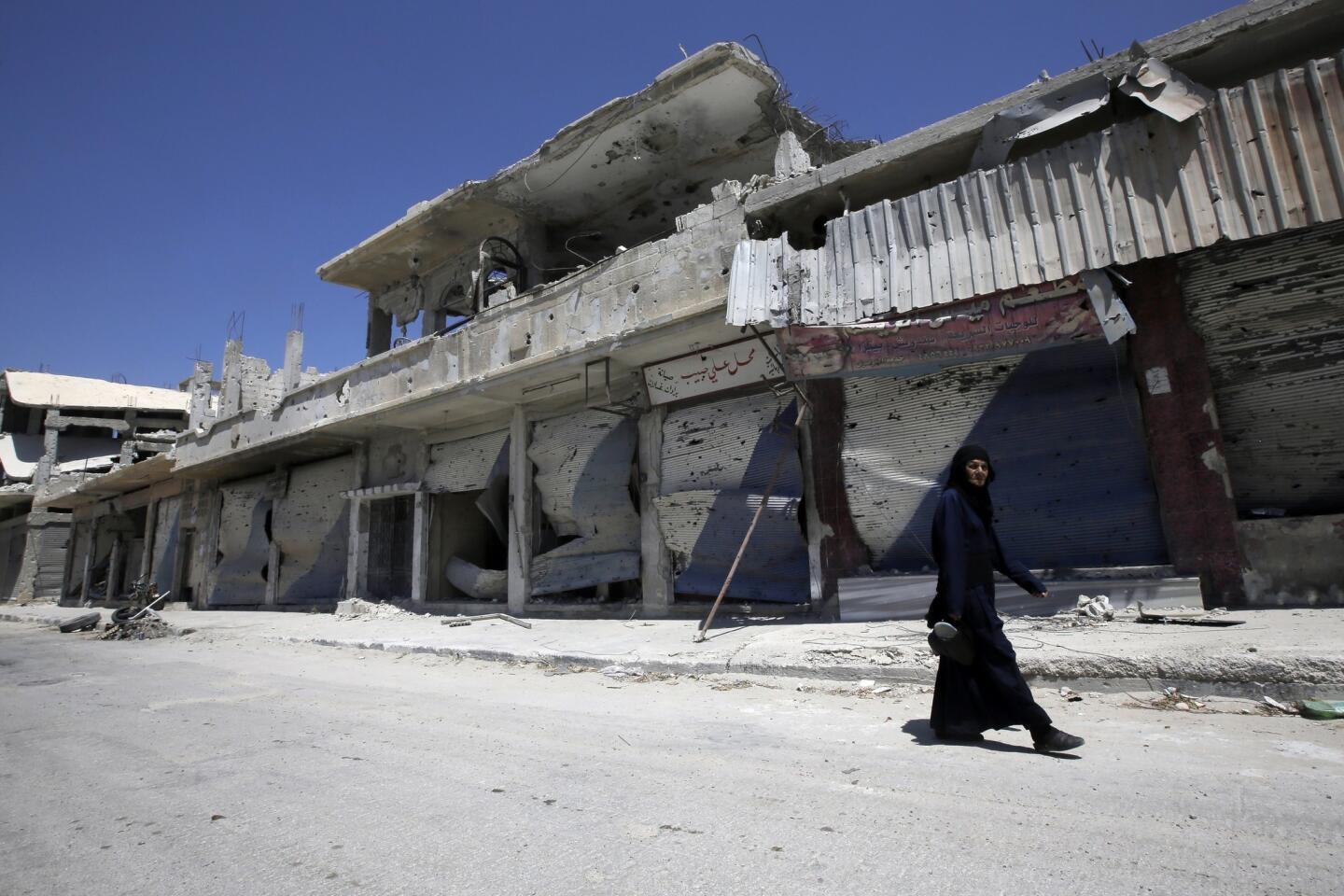
In the strategic Syrian city of Qusair, near the Lebanese border, doors are left contorted along a street ravaged by the fighting. (Joseph Eid / AFP/Getty Images)
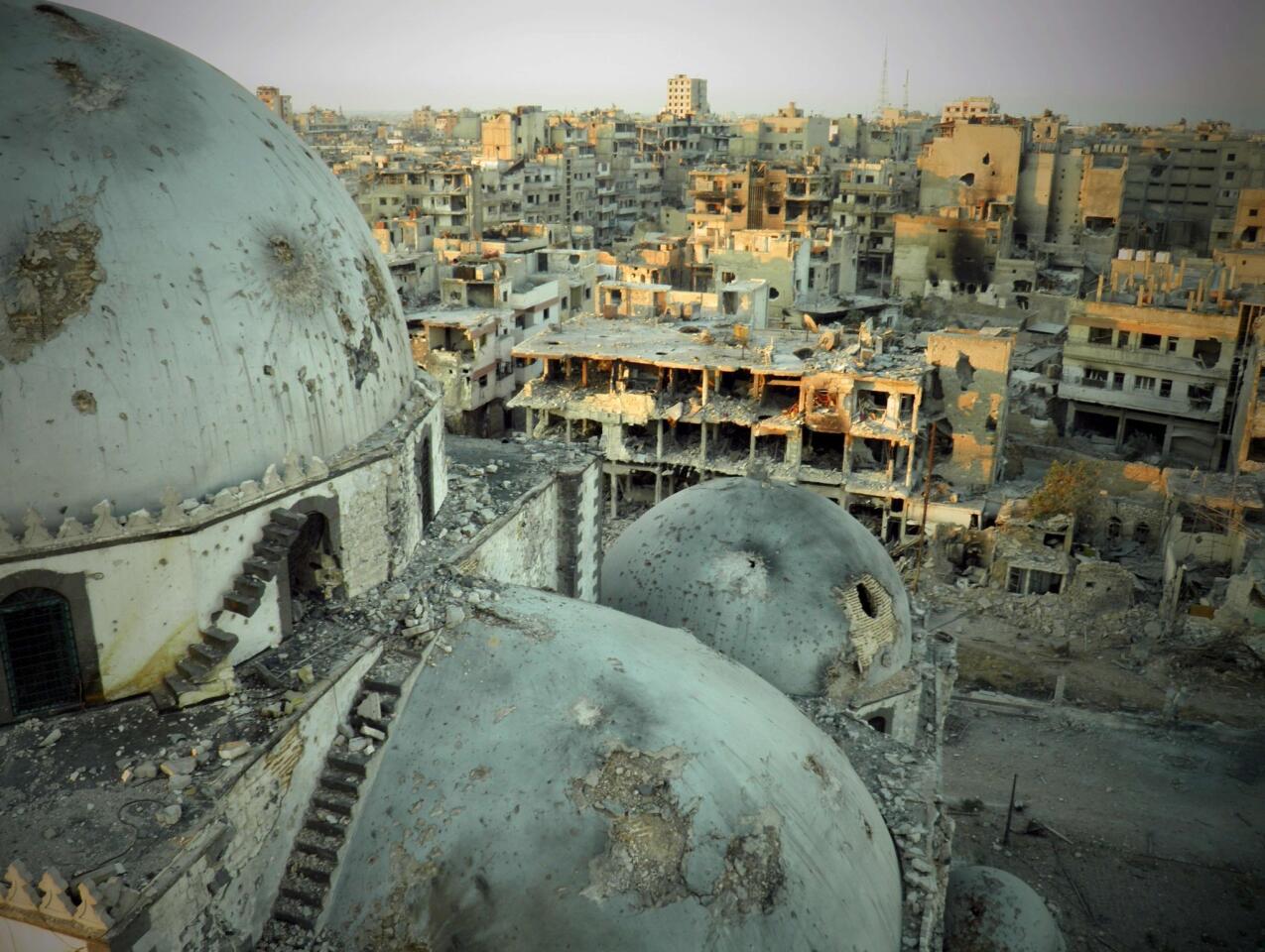
In the city of Homs, known as the epicenter of the rebellion, damage can be seen on the domes of the Khalid bin Walid mosque, reportedly shown in an image released by the Syrian opposition’s Shaam News Network. (AFP / Getty Images)
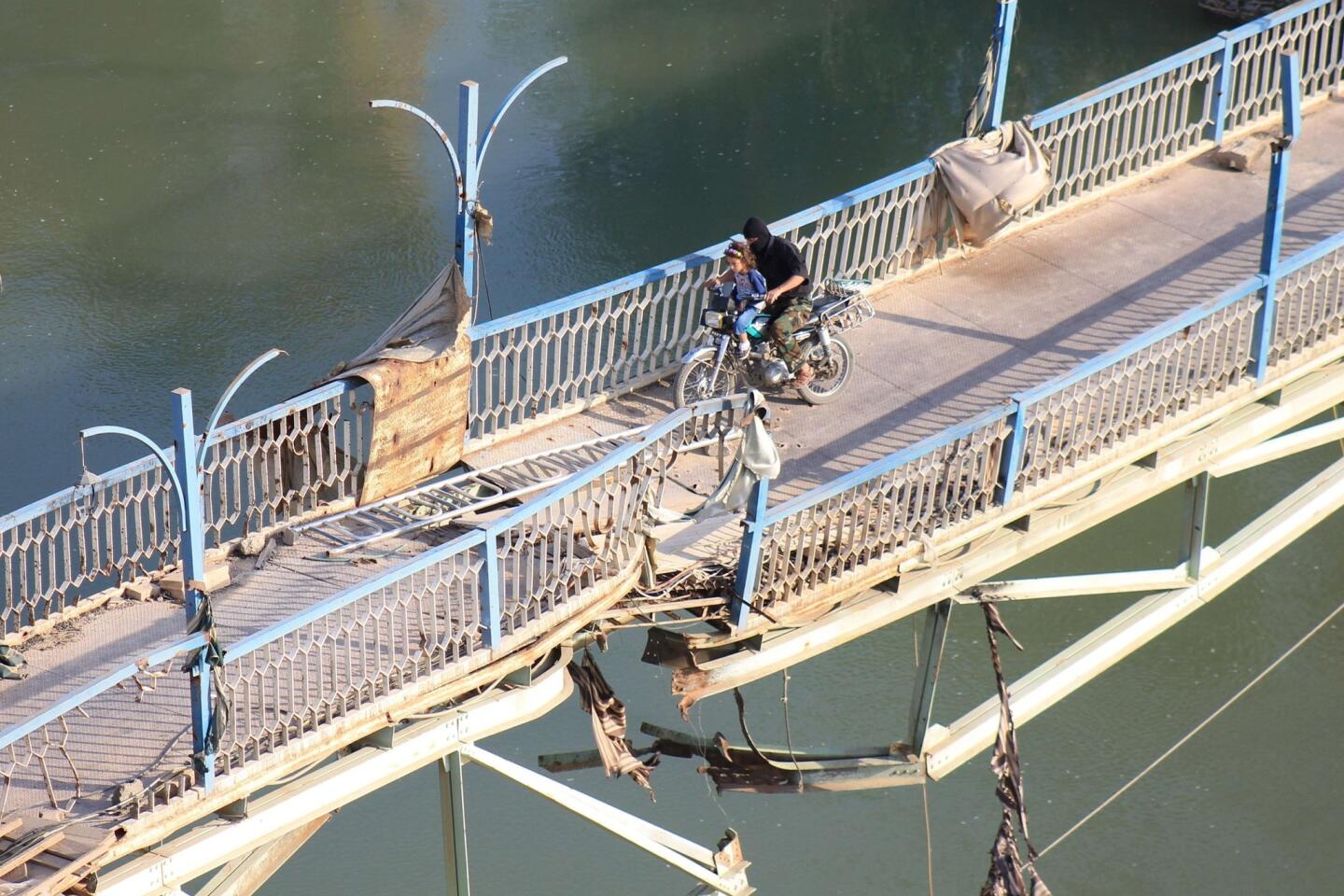
In Syria’s eastern town of Dair Alzour, a rebel fighter and a child cross a damaged bridge early this month. (Abo Shuja / AFP/Getty Images)







